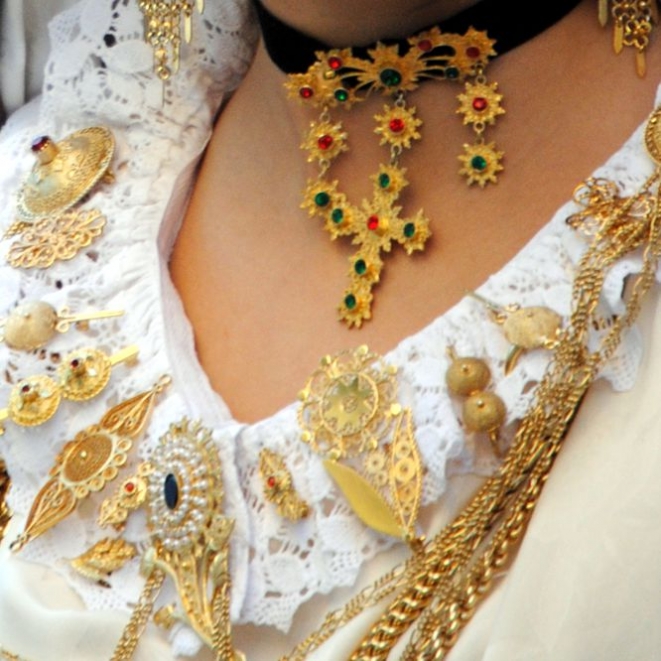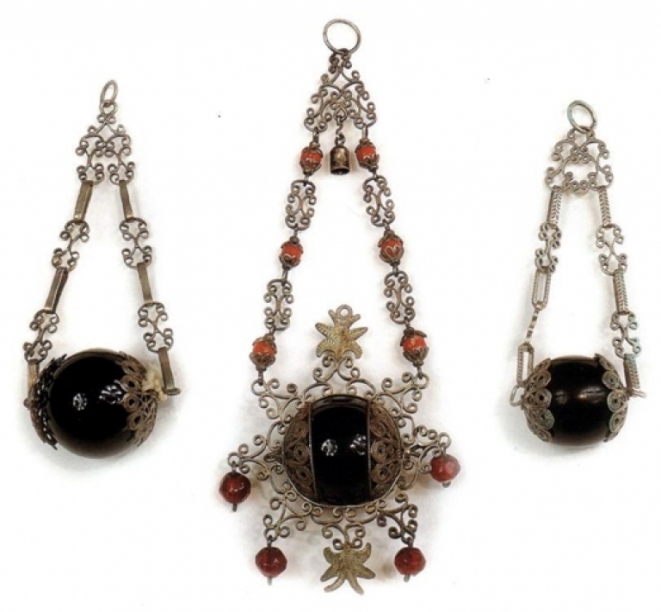"Prendas" the filigree jewel
A characteristic handicrafts which boasts a millenary history
Among the goldsmiths, along centuries, was developed the traditional Sardinian jewelry, that distinguishes it from any other, even if influenced by different cultures landed on the island over the centuries.

Whether they are sacred objects, such as crosses and rosaries, or simply decorative or practical, as buttons, pins, pendants and clasps, used, the latter, to join the edges of a cloak, the jewel of Sardinia is not, contrary to what would be reasonable to think, a static phenomenon, tied to the past.
In fact, the goldsmiths and silversmiths are absolutely open to new influences, creating precious objects, while maintaining the traditional styles, they look as modern and sophisticated.
The execution technique most used is definitely the filigree, with which is produced the most common traditional jewelry, the "button", simply pin, or, joined by the giuali, works as a closure, through slots, of shirts , bodices, etc.

Of six-eighteenth century style, however, is the lasu, a butterfly-shaped pendant, decorated with beaded fretwork, laced, with a black velvet ribbon at the neck.
Being Sardinia rich in mines, the silver was, as always been, the most used metal in the manufacture of jewelry, but now, with the spread of a greater well-being, the gold is preferred, together with garnets and coral, that in the island is of a very high quality.
Dorgali, Bosa, Iglesias and Alghero are the main processing centers, but the goldsmith's art is now widespread throughout the entire Island.